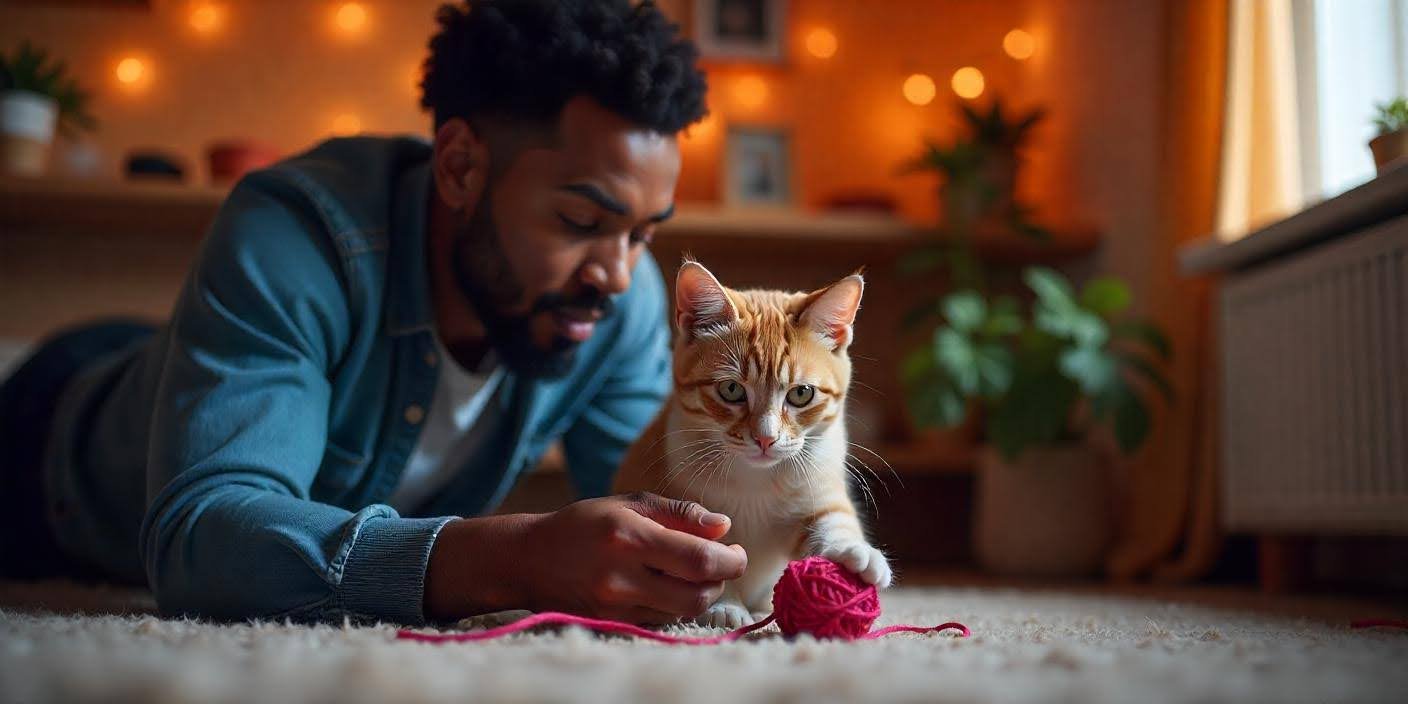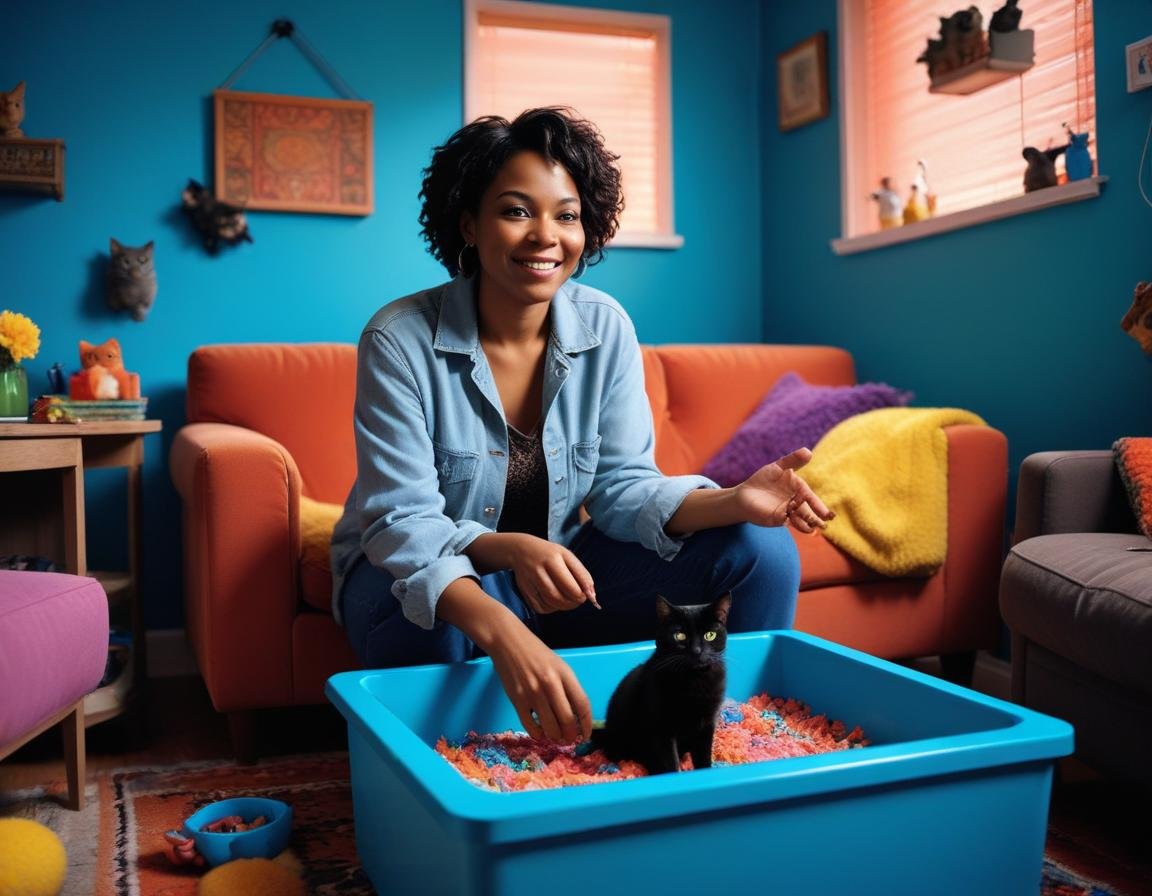Introduction
Pica in cats is a concerning behavior where a feline compulsively eats non-food items. While occasional chewing on a stray object might not be cause for alarm, persistent pica can lead to serious health risks. As a pet owner, understanding how to prevent pica in cats and effectively manage this condition is crucial for the well-being of your furry friend. In this guide, we will explore the causes of pica in cats, signs to watch out for, and practical tips for preventing and treating this behavior. Let’s dive in!
Understanding Pica in Cats: What It Is and Why It Happens
Before delving into how to stop cat pica behavior, it’s important to understand what pica is and the reasons behind it. Pica is a condition where a cat eats non-food items, such as fabric, plastic, string, or even dirt. While this may seem like an odd behavior, it’s more common than you might think.
What Causes Pica in Cats?
Pica in cats can be triggered by a variety of factors. The most common causes include:
- Nutritional Deficiencies: Cats may eat non-food objects to make up for a lack of specific nutrients like fiber or minerals.
- Boredom and Lack of Stimulation: Cats that are not mentally or physically engaged might turn to pica as a form of entertainment or stress relief.
- Stress and Anxiety: Just like humans, cats experience stress. Changes in their environment, a new pet or family member, or even a change in routine can trigger pica.
- Medical Conditions: Certain health issues, including gastrointestinal problems or dental discomfort, can cause pica behavior in cats.
- Genetics and Breed: Some cats, especially certain breeds like Siamese, are more prone to developing pica behaviors.
Signs of Pica in Cats: How to Identify the Behavior
Recognizing the signs of pica early can help prevent damage to your cat’s health. Common signs include:
- Chewing or Eating Non-Food Objects: Cats with pica may chew on or ingest things like rubber bands, paper, plastic bags, and even electrical cords.
- Vomiting or Digestive Issues: If your cat eats non-food items, it could lead to gastrointestinal problems, vomiting, or even blockages in the digestive tract.
- Behavioral Changes: Increased anxiety, restlessness, or a sudden shift in behavior can also indicate that your cat is experiencing pica.
If you notice your cat engaging in any of these behaviors, it’s important to take action and consult with your veterinarian to rule out underlying health issues.
Preventing Pica in Cats: Practical Tips for Pet Owners
Preventing pica behavior requires a multifaceted approach that involves addressing potential causes, offering alternative outlets for chewing, and ensuring a healthy environment for your cat. Here are several practical tips to help prevent pica in cats:
Provide a Balanced Diet
Ensure your cat is receiving a well-rounded diet that meets all of their nutritional needs. If you suspect a nutritional deficiency, consult your veterinarian about dietary adjustments or supplements that may help. Sometimes, changing your cat’s food can eliminate the urge to chew on non-food items.
Environmental Enrichment for Cats
A lack of stimulation is one of the main causes of pica in cats. Cats are intelligent and active animals that need plenty of opportunities for mental and physical stimulation. Consider adding interactive toys, scratching posts, and climbing trees to keep your cat engaged. Puzzle feeders that encourage problem-solving are also great for stimulating their minds.
Regular Playtime and Exercise
Incorporate daily playtime into your cat’s routine to help burn off excess energy. Active play not only provides exercise but also strengthens the bond between you and your pet. Use feather wands, laser pointers, or even treat-dispensing toys to engage your cat in stimulating activities.
Reduce Stress in Cats

Stress is a significant trigger for pica behavior in cats. If your cat is feeling anxious, it’s essential to minimize stressful situations. Provide a quiet and safe space for your cat to retreat to when needed. Avoid sudden changes in the household, such as moving furniture or introducing new pets, as these can contribute to anxiety.
Offer Chew-Friendly Alternatives
If your cat has a tendency to chew on inappropriate items, try offering safe alternatives. Rubber cat toys, catnip-filled chew toys, or even rawhide alternatives can redirect their chewing behavior. This satisfies their natural urge to chew without harming them.
Managing Pica in Felines: Treatment Options
If your cat is already exhibiting pica behavior, don’t despair. There are treatment options that can help manage the condition.
Veterinary Care
Before jumping to conclusions, it’s important to rule out any underlying medical conditions that might be contributing to your cat’s pica. Your veterinarian can conduct a thorough examination, including blood tests and stool analysis, to identify any nutritional deficiencies, parasites, or gastrointestinal issues.
Behavioral Modification Techniques
Working with an animal behaviorist can be highly effective in managing pica. These professionals can help identify triggers and teach you strategies to reduce the behavior. Positive reinforcement techniques, such as rewarding your cat when they engage in acceptable behaviors, can also be helpful.
Medication
In some cases, medications may be necessary to manage anxiety or compulsive behaviors. Your veterinarian might prescribe anti-anxiety medications or antidepressants to help regulate your cat’s behavior. This is often used in conjunction with behavioral therapy.
You can also read about:
Understanding Pica in Cats: Top 7+ Causes, Symptoms, and Effective Management
Safe Solutions for Pica in Cats: What You Can Do at Home
While professional help may be required in more severe cases, there are some safe solutions you can try at home to help manage and prevent pica in cats.
Cat-Proofing Your Home
One of the first steps in preventing pica is to cat-proof your living space. Remove or secure objects that could be harmful to your cat, such as rubber bands, cords, and plastic bags. You may also want to use double-sided tape on areas where your cat tends to chew.
Use Bitter Sprays
Bitter sprays are non-toxic solutions designed to deter cats from chewing on furniture and other household items. These sprays make the objects taste unpleasant, helping to curb the pica behavior.
Consistent Routine
Cats are creatures of habit, and a consistent routine can help alleviate anxiety and stress. Try to keep feeding times, play sessions, and cuddle time predictable to make your cat feel more secure.
Conclusion:
Pica in cats can be a frustrating and concerning issue for pet owners, but with the right approach, it’s manageable. By understanding the causes of pica and providing an enriching, stress-free environment, you can significantly reduce the chances of your cat developing this behavior. If pica persists, don’t hesitate to seek professional help from your veterinarian or an animal behaviorist to get your cat the support they need.
FAQs:
What is the main cause of pica in cats?
Pica in cats can be caused by various factors, including nutritional deficiencies, stress, boredom, or medical conditions. It’s important to identify the root cause to address it effectively.
Can stress cause pica in cats?
Yes, stress is a common trigger for pica. Cats may chew on non-food items as a way of coping with anxiety or changes in their environment.
How can I prevent my cat from eating non-food items?
Providing a balanced diet, engaging in regular play, offering chew-friendly alternatives, and reducing stress can help prevent pica in cats.
Should I consult a veterinarian if my cat has pica?
Yes, it’s essential to consult a veterinarian to rule out medical conditions and receive guidance on managing the behavior.
Are there any medications for pica in cats?
In some cases, veterinarians may prescribe medications to manage anxiety or compulsive behaviors associated with pica.




